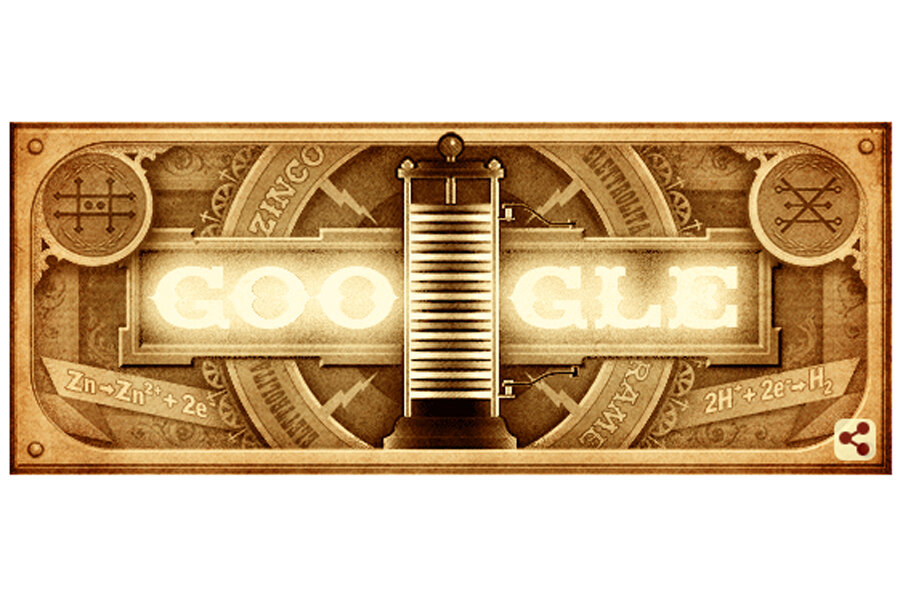Alessandro Volta: Google Doodle celebrates inventor of the battery
Loading...
Wednesday’s Google Doodle pays homage to the inventor of one of the most crucial components of modern technology: the battery.
Alessandro Volta, an Italian physicist born in 1745, spent years investigating electricity before he created the precursor to what now powers our smart phones, our laptops, our tablets, and (in some cases) our cars.
The Doodle shows an old-fashioned battery – or what Mr. Volta called a “voltaic pile” charging, and lighting up the Google logo in the process. In the upper-left and upper-right corners of the Doodle are the alchemical symbols for zinc and copper. Volta’s battery was constructed of zinc and copper electrodes, with sulfuric acid between them. When the terminals were connected, the zinc and the acid chemically reacted with one another and caused an electric current to flow. On either side of the battery, the Doodle shows the formulas for zinc and sulfuric acid.
Volta was born in Como, a moderately-sized town in northern Italy, and became a professor of physics at the Royal School in Como when he was 29. There, he popularized the electrophorus, a tabletop device that could be used to generate static electricity. He also built on the research of Benjamin Franklin by discovering how to ignite methane gas with a spark. In 1778, Volta was appointed the chair of experimental physics at the University of Pavia, a position which he held for the next 40 years.
Volta traveled across Europe over the next several years, showing his electrical experiments and inventions to the top scientists of the day. He constructed the first capacitor to store electrical charge, and built sensitive electroscopes to measure how electric charge behaved.
In the final years of the 1700s, Volta discovered that different metals connected by some kind of moist substance, such as salt water, could produce electric voltage. In 1800, he invented the first battery by stacking zinc and copper disks, alternating, with acidic cards in between. Volta’s battery was replicated by other scientists and inventors, and led to the discovery of new elements and, 20 years later, the electric motor.
Volta retired in 1819 at the age of 74, and lived with his family for eight more years, until his death in 1827. Because of his tremendous contributions to the then-budding field of electricity, after his death the unit of electrical potential was named the “volt” in his honor. In 1927, on the 100th anniversary of Volta’s death, a museum displaying the scientist’s equipment and personal belongings was completed in his hometown of Como.








